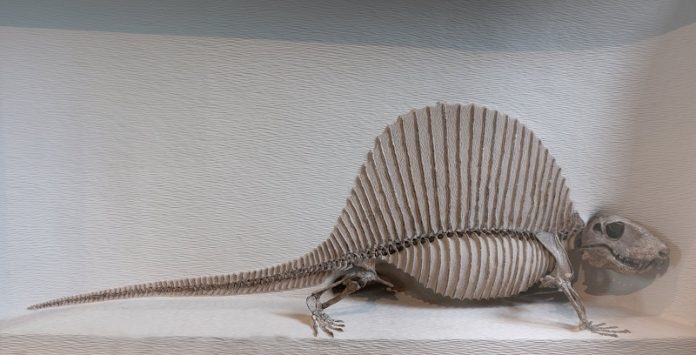
A new study has revealed that the evolution of mammals from a sprawled to an upright posture was not as straightforward as previously believed.
This transition, which marked a major turning point in mammalian evolution, was complex and happened over millions of years.
The study, led by Dr. Peter Bishop and Professor Stephanie Pierce from Harvard, was published in Science Advances.
Their findings provide new insights into the shift that helped mammals, including humans, achieve their distinct upright stance.
Early mammal ancestors, known as synapsids, had a sprawled posture similar to lizards, with limbs extending out to their sides.
Over time, mammals evolved to have an upright stance, as seen in modern animals like dogs, horses, and humans. This upright posture allowed for more efficient movement and speed, key traits that contributed to the success of mammals.
To understand this shift, Bishop and Pierce began by studying the biomechanics of five modern animals, including a tegu lizard (with a sprawled posture), an alligator (with a semi-upright stance), and a greyhound (with an upright stance).
By analyzing these living species, the researchers could see how an animal’s anatomy affects its posture and movement.
The researchers then expanded their analysis to eight fossil species from around the world, spanning 300 million years of evolution.
The species included the sail-backed Dimetrodon, the small proto-mammal Megazostrodon, and the saber-toothed predator Lycaenops. Using computer simulations, the team created digital models of the muscles and bones of these ancient animals. This allowed them to generate 3D images showing how the hind limbs could apply force to the ground.
Dr. Bishop explained that the amount of force an animal’s limbs can apply to the ground determines how well it can move. “If an animal can’t produce enough force in the right direction, it won’t be able to run fast, turn quickly, or keep its balance,” he said.
Using these models, the researchers calculated a “feasible force space” for each animal, showing the range of movements each limb could achieve. This technique provided a clear picture of how these animals stood and moved, offering new insights into the evolution of posture.
The results showed that the shift from a sprawled to an upright stance did not happen in a simple, linear way. Instead, locomotion and posture varied across species and over time. Some ancient species could switch between a sprawled and upright stance, similar to modern alligators, while others reverted to a more sprawled posture before upright stances became common.
Interestingly, this reversal toward sprawled postures appears to coincide with the Permian-Triassic mass extinction, which wiped out 90% of life on Earth. During this period, synapsids lost their dominance to dinosaurs, which may have pushed them into new environments, altering their evolutionary path.
The study used a technique called “feasible force space,” which has been around since the 1990s but was applied to fossils for the first time in this research. Bishop and Pierce’s digital modeling approach provides a more complete view of how limbs functioned and evolved over millions of years.
Their findings also help explain why some early mammal ancestors had asymmetrical limbs and joints, traits linked to sprawling postures. Additionally, it sheds light on why their fossils are often found in a spread-eagle pose, in contrast to modern mammal fossils that are usually lying on their sides.
Professor Pierce emphasized that these findings show how evolutionary changes in mammals took longer and were more complex than previously thought. She noted that the full set of traits associated with upright posture in today’s mammals came together relatively late in synapsid history. Advances in computing power and digital modeling are allowing scientists to look at these ancient animals in new ways.
“These new techniques help us see that early mammals weren’t just moving in a simple, linear path to what we see today,” Pierce said. “Their evolution was full of twists and turns, and mammals today are really quite special.”
This study offers a more nuanced view of how mammals evolved to stand tall and move efficiently, helping researchers better understand the complex history of these remarkable animals.



